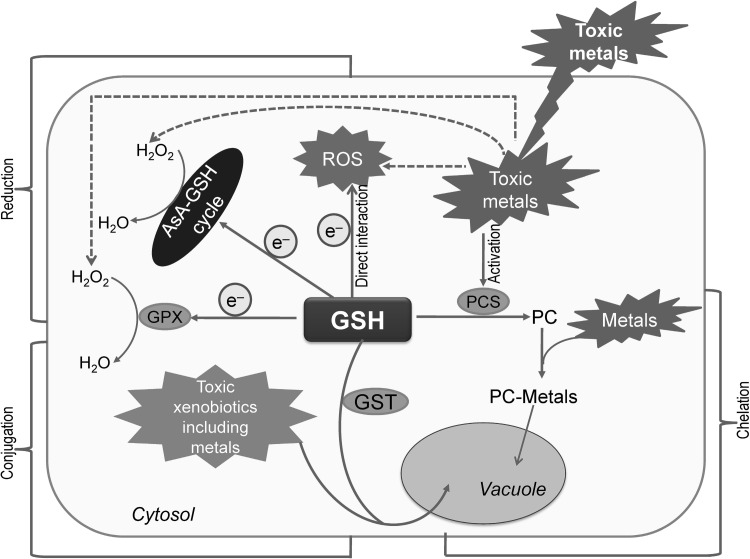Fig. 3.
GSH mediated toxic metal and xenobiotic detoxification in a plant cell; PC: phytochelatin, PCS: phytochelatin synthase. Dotted arrows indicate the induction of ROS production. Protection of plant cells from metal/metalloid toxicity by GSH occurs in three possible ways: (1) reduction: direct quenching of ROS which is occurred by AsA-GSH cycle together with other components of antioxidant system, (2) conjugation: toxic metals/xenobiotics conjugation by the activity of glutathione S-transferase (GST) and transportation of conjugates into vacuole, (3) chelation: GSH acts as a precursor for the synthesis of phytochelatins (PC). Metals are bound to the thiol (–SH) group of GSH and forms PC by the activity of enzyme phytochelatin synthase (PCS, γ-Glu-Cys transpeptidase); the PC-Metal complex is also transported into the vacuole. Nahar et al. (2016b), with Permission from Wiley

